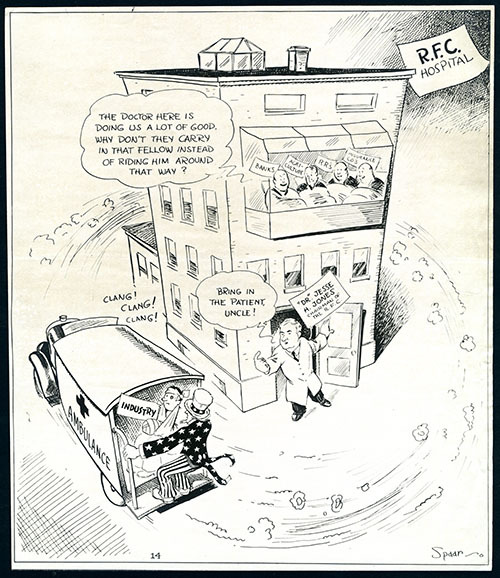The New Deal’s Capitalist Reforms

Louis Hyman is an excellent historian of capitalism, who wrote this book on temporary work, among other books. His op-ed today reminds us that while we focus on the New Deal’s direct employment and labor law programs, (largely because they can serve a more socialist function in our public memory) that there’s a ton of learn about how the New Deal used capitalist means to build big new social programs.
Housed under the R.F.C. were new organizations like the Federal Housing Administration, the Rural Electrification Administration and the Defense Plant Corporation. These agencies did not spend taxpayers’ money, but drew on that idle bank capital to finance large projects geared toward the public good.
Through low-interest rates loans and the unprecedented use of insurance underwritten by the U.S. government itself, these lending systems laid the foundation for the 20th-century American middle class and the nation’s ability to win the industrial battle that was World War II. Tens of billions of dollars (nearly a trillion today) were borrowed by the R.F.C. for reinvestment. Even more in private investment was promoted through insurance programs.
In just a few years, the Federal Housing Administration spurred the housing boom. The Rural Electrification Administration transformed an energy grid in which 10 percent of rural homes had electricity into one that by 1950 provided 90 percent of rural America with power. The Defense Plant Corporation, meanwhile, facilitated the large-scale growth of the U.S. electronics and aerospace industries. And the R.F.C. did all of this while making a (modest) profit for the government.
While the underlying finances (tax relief, relaxed lending terms, loan insurance)looked roughly the same, the enterprises could not have been more varied. They supported small-town banks, as well as rural cooperatives and the largest corporations. Many big businesses and institutional investors did not believe in Roosevelt’s audacious egalitarian motivations. But with the prospect of their money sitting idle and the government guarantees of security in place, they lent anyway.
If, for instance, the Biden Treasury Department worked with the Federal Reserve to set up low-interest-rate lending facilities that prioritized rural and minority small businesses fighting to reopen after the pandemic or that prioritized clean energy businesses, then the country could witness a similar recovery boom in the 2020s.
The New Deal was very much about saving capitalism from itself. Without getting into debates about whether we should be fighting for socialism or a reformed capitalism, if capitalism wants to survive into the future, it needs to be saved from itself again (because of climate change if nothing else). There’s a lot we can learn from the New Deal here.


